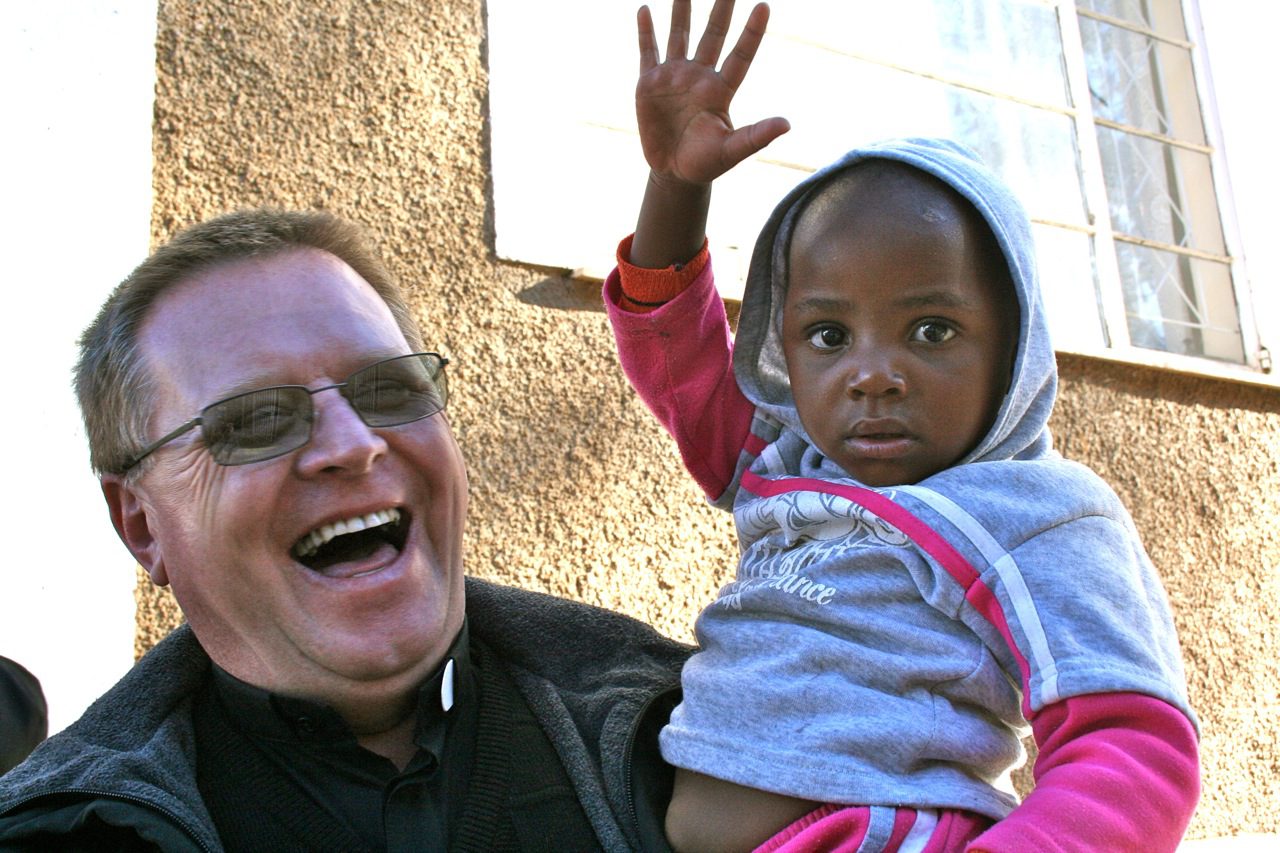“Multicultural” is a word that typifies much of South Africa. It is an element that adds a wonderful richness to the country, yet it is also at the root of many of the nation’s struggles.
The post-apartheid national anthem of South Africa gives a taste of this multicultural richness. It is sung in a combination of Zulu, Afrikaans, Xhosa, Sesotho and English –– five of the 11 most frequently spoken languages of the country.
The land was inhabited for generations by a variety of native peoples prior to the arrival of European traders, and eventually, colonists. Dutch, German and French Huguenots were the first overseas travelers to settle in the country.Later, they were joined by the British.And as power and allegiances changed hands in Europe, so too did they in the southern tip of Africa.For many years Great Britain and the Netherlands alternatively claimed leadership of the land.
Slavery is also a piece of the country’s history. Slaves were brought in from India, East Asia and other parts of Africa. They served as laborers and servants, but also as skilled tradesmen who quickly helped to build the Cape Colony.
The citizens of today’s South Africa are a mix of these many cultures along with others who have immigrated to the country.
“Multicultural” is also a word that describes the SCJ presence in South Africa. As noted in a previously in the article “SCJ ministry returns to St. Teresa Mission” the Priests of the Sacred Heart first came to South Africa in 1923. Led by Fr. Wolfgang Demont of the German Province, a group of four SCJs settled near what is now the South African Provincialate in Aliwal North.
These German missionaries established several parishes and mission stations.In 1929, they opened the first South African seminary. In operation for only 15 years, it prepared several SCJs, as well as priests for other communities, for ordination.
Arrival of American SCJs
The same year that the German Province sent missionaries to South Africa the U.S. Province was established – also by German missionaries.
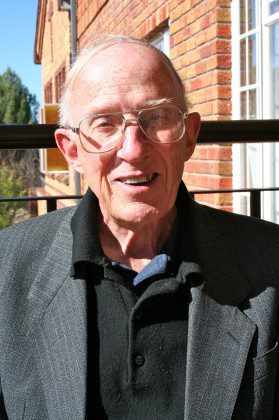
Twenty-five years after it gave birth to the U.S Province, the mother province turned to its offspring for help in South Africa.
The German Province, like much of Germany, was greatly weakened by World War II.Some SCJs were interred; others were simply unable to move beyond their borders.
American SCJs first arrived in South Africa in 1948.The district of Aliwal North was divided to allow for a new district of De Aar. American SCJs took responsibility for De Aar and the Germans continued to meet the pastoral needs of Aliwal North.
One of the greatest challenges for both regions was, and continues to be, personnel.
In the 1980s a plea was made to the Polish Province for assistance.Soon, a third province was taking a significant role in building the Catholic Church in South Africa.
In 1995, the Regions of Aliwal North and De Aar came together to form the South African Province.
Now, SCJs from the Polish Province are carrying on the dreams of those early German and American missionaries in South Africa.
Bishop Adam Musialek, SCJ, one of the first Poles to serve in South Africa, was named bishop of De Aar in 2009.And the provincial superior?Another Pole:Fr. Peter Surdel, SCJ.
Fr. Peter, like many provincial and regional superiors before him, continues to address a dual challenge: developing vocations within South Africa while also recruiting SCJs from outside of the country to continue the ministry of the Church.
Now it is the new District of India that is sending SCJ religious to minister in South Africa.An Indian theology student –– Frater Chapalamadugu Jeyaraju, SCJ –– is a member of the Pan-African formation program in Pietermaritzburg preparing not only for ministry, but most likely, ministry in the South African Province.
The South African Province has also hosted an Indian student during his regency (one to two years of ministry before ordination; much like a “practicum”) and in the future, more Indian SCJs are expected to join in the multicultural ministry that is South Africa.
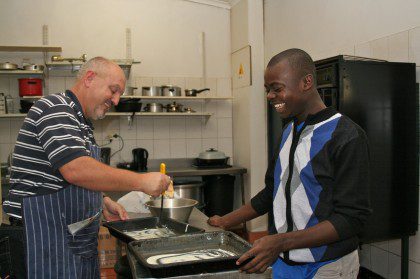
Multicultural experience begins in formation
As noted above, the South African Province hosts a pan-African formation program in Pietermaritzburg. Begun in 2005, it is a common project of the provinces of Cameroon, Congo, Madagascar, Mozambique and South Africa. The two newest priests for the South African Province –– Fr. Ntsikelelo Bambatha, SCJ, and Fr. Joshua Mpiti, SCJ –– are graduates of the program.
There are currently a dozen students in the pan-African formation community. Besides Frater Jeyaraju, they include Frater Virgilio Francesco, an SCJ from Mozambique who is busy with a thesis that examines the role of theology from an African perspective in the development of African democracy.
It includes Frater Jean Pierre Mokonzi of the Congolese Province who, when speaking of what attracted him to the Priests of the Sacred Heart quickly corrects himself, saying “I appreciated their, no, I mean OUR spirituality,” he said. “It is a spirituality that emphasizes Christ’s love, love in service.” How does Frater Jean Pierre picture himself living “love in service?” In a parish in Congo, “or maybe as a missionary, perhaps in Venezuela.”
Multiculturalism continues with a student from Congo, studying in South Africa, who considers service as a missionary in South America.
“That is something that I like here,” said Frater Tadeu Ernesto, SCJ, of Mozambique.“I enjoy learning about other areas where the congregation is located. We are of different cultures but are also the same.”He went on to explain that although he is away from home he still feels like he is among family, his SCJ family.
Multiculturalism extends to the formation team where the program director, Fr. Zolile Mpambani, SCJ, is a South African, and the spiritual director, Fr. Alessandro Capoferri, SCJ, is an Italian member of the Mozambique Province.
Students at the international formation house do most of their academic studies at St. Joseph’s Theological Institute in nearby Cedara. St. Joseph’s is a perfect fit for the multi-cultural SCJ community. Its students and faculty represent not only the many faces of the African continent but of Asia, Europe, North and South America. Professors from the U.S. Province, including Fr. Charles Brown, SCJ, and Dr. Richard Lux of Sacred Heart School of Theology, are among the many international theologians who have taught at St. Joseph’s.
Ministry in post-apartheid South Africa
The Priests of the Sacred Heart have been with the people of South Africa during some of the country’s most difficult struggles. They saw the pain of apartheid –– a government policy of racial segregation –– but also its dismantling. And when the first post-apartheid elections were held in 1994, SCJs, including Bishop Joseph Potocnak, retired bishop of De Aar, volunteered as election observers.
South Africa is a very different place than what it was when those first German priests arrived in Aliwal North.But much is also the same.
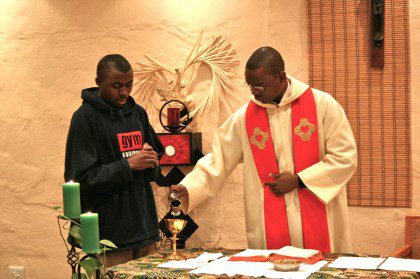
Under apartheid, separate churches were established to maintain racial segregation. Within just a few miles there would be a church for blacks, one for coloreds (the South African term for people of mixed race), and one for white Catholics. Apartheid is gone, but often, these separate churches remain. Why? It’s a question with many answers, but one of those answers goes back to the multicultural diversity of South Africa.
As noted earlier, the national anthem of South Africa features five of the 11 most frequently spoken languages of the country.The differences found in churches close to one another isn’t just in the color of the worshippers’ skin, it is also in culture and language.White Catholics most likely worship in English.In an historically “colored” church the language may be Afrikaans.And in a traditionally black church the language could be one of several indigenous languages, such as Sesotho, Xhosa or Zulu.
“There has been some sharing and interaction, some social get-togethers” said Fr. Angel Gabryel, SCJ, who is based in Graaff Reinet.“But it is only beginning.”
It takes just a brief glance inside the three churches to which Fr. Angel ministers to see the challenges he faces. Banners are hung in all of the churches but the language of each is different.
“A person can communicate in many languages, but when it comes to prayer, people are most comfortable praying in their native tongue,” said Fr. Thi Pham, SCJ, when talking about the Vietnamese Catholic community in Milwaukee.
It is the same in South Africa where not only is there a diversity of culture, but a long history of a separation of those cultures.
The poorest of the poor
The Priests of the Sacred Heart have a long tradition of going to and serving the poorest of the poor. Just as SCJs are found in some of most economically disadvantaged counties in the United States, the SCJs of South Africa are found in two of the country’s poorest dioceses: Aliwal North and De Aar.
“This is very much a mission area,” said Fr. Peter Surdel about the dioceses in which the SCJs minister.“There are many differences when you compare South Africa to other African nations.In some places, South Africa is much more wealthy and developed than other nations on the continent.But at the same time the poverty found here is staggering.”
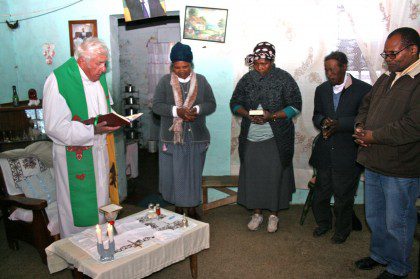
In some ways, the Church in South Africa is similar to the Church in rural South Dakota. The United States is a country with much wealth, yet on the Indian Reservations that the SCJs serve, staggering poverty is also found.And in both, the Catholics to whom the SCJs minister are spread over many miles.
The vital ministry of “presence” is a demanding one for SCJs in both locations.
“That is what is important,” said Fr. Peter, talking about the Church’s presence in South Africa, and in particular, the SCJs’ presence. “We need to be passionate about our ministry, about letting people know that they are loved by God no matter what their circumstance. Sometimes just helping people turn away from pessimism and to have hope is the most important thing that we can do. It isn’t just good for the people whom we serve, but it is also good for us as SCJs. Passion is contagious. If I am passionate about ministry, others will be too.
“South Africa is a beautiful country, but it also has many, many challenges. There is crime, there is AIDS, and vocations are few. But there is much here for us as SCJs. Our spirituality calls us to be signs of hope to the hopeless. We are called to be reconcilers…
“Being here, we have an opportunity to offer much, but we have an even greater opportunity to receive,” concluded Fr. Peter. “I have learned so much from the people here, being a part of their lives.”
This year marks the 15th anniversary of the South African Province, a province whose roots go back to a small group of German missionaries pursuing a request made by Pope Pius XI.
Almost 90 years later, the SCJs’ presence to the people of South Africa continues –– through an international effort –– just as in South Dakota.
